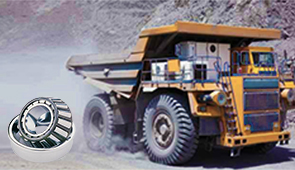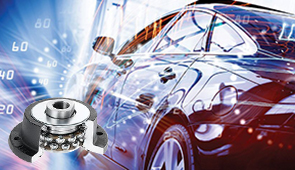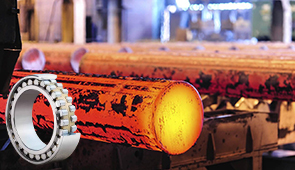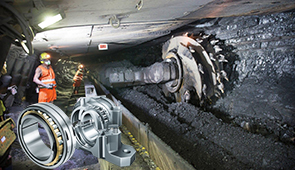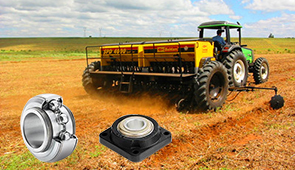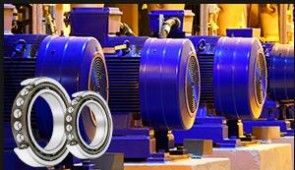Electric Motor Shaft Types: Choosing the Right Material for Your Electric Motor
Electric motor shafts are critical components that play a pivotal role in the performance and reliability of electric motors. The material used to construct these shafts directly impacts their durability, efficiency, and compatibility with various operational requirements. With a wide range of materials available—each offering distinct characteristics—it can be challenging to determine the best option for a particular application. This article aims to provide a comprehensive overview of electric motor shaft types, exploring the unique properties of each material and guiding you through the key considerations for selecting the optimal solution. Whether you are designing a new motor or maintaining an existing system, understanding these material options is essential for achieving the desired performance and longevity of your motor.
Understanding Electric Motor Shaft Types
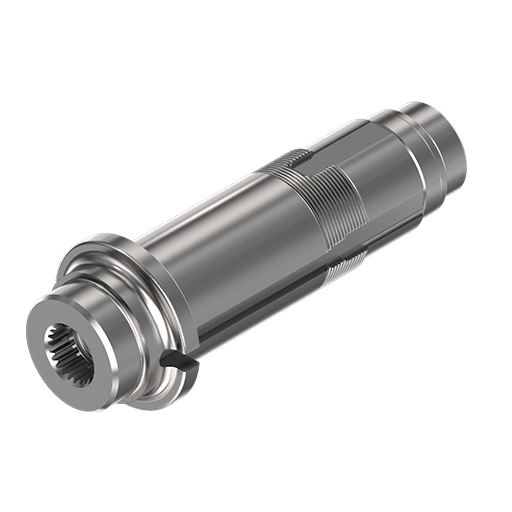
Overview of Electric Motor Shafts
The electric motor shafts are the key elements transmitting the mechanical power from the motor to the load. Their design and materials determine the efficiency, durability, and correct alignment of the motor system. The shafts must be capable of resisting torsion, bending, and axial loads at least to ensure that they will perform adequately under the specified operating conditions.
The commonly used shaft materials are carbon, alloy, and stainless steel. Carbon steel remains the most popular because of its strength at a low cost and high flexibility, making it fit for most standard applications. On the other hand, alloy steel stands better against wear and fatigue in circumstances of heavy mechanical stresses or with higher temperatures. Stainless steel would be the preferred choice in applications that involve harsh environments or humidity, such as in marine or chemical processing industries.
Electric motor shaft selection must consider several factors to ensure full compliance with operational and environmental requirements; these factors include the torque and power specifications of the motor, conditions of the surroundings in which it will be working, and the possible contamination or corrosion. Proper material selection ensures that a shaft can withstand the mechanical and environmental stresses it will see, thus granting it the ability to indirectly support the reliability and service life of the motor.
Common Types of Motor Shafts
- Keyed shafts: Keyed shafts closely relate as far as motor applications are concerned. They consist of a keyway that helps join the mating component, e.g., gear or pulley, with the shaft. The translational keyway design ensures rotational alignment and prevents any slippage in high torque loading. Keyed shafts are usually carbon steel or alloy steel and find wide use in industrial machinery and automotive applications.
- Splined shafts: A splined shaft consists of a series of ridges or splines along its length that mesh with grooves in the mating parts on the opposite sides. This gives a higher torque than a keyed shaft without a key. Such shafts find their application in power-intensive situations demanding precise power transfers, aerospace systems, robotics, and the like.
- Hollow shafts: Being tubular, hollow shafts were designed for weight reduction while maintaining strength and torsional rigidity. These shafts are suitable for applications where weight consideration is a priority, such as electric vehicles and light automation equipment. On the other hand, hollow shafts offer an opportunity to implement wiring or fluid transfer systems; this kind of duality gives its usefulness another twist.
- Tapered Shafts: Tapered shafts gradually decrease their diameter over the length of the shaft, providing a fit with wheels or hubs through the self-centering action. Because of this, they are beneficial for high-speed or precision applications. Tapered shafts are commonly found in power transmission and precision tooling industries.
- Stepped shafts: Stepped shafts incorporate different diameters from one part to another along their length to accommodate numerous components such as bearings, gears, and couplings. Very versatile shafts are applied mostly in complex machinery where numerous concerned components are mounted along the shaft. Proper machining and surface finishing are a requirement to maintain the structure and working of stepped shafts.
Each kind of motor shaft is designed for different criteria under which the motor shaft operates, and the satisfaction of those criteria is to be made from the demand of the equipment for which the shaft is designed, the properties of materials, and the environmental conditions. With the advancement in modern materials and precision in manufacturing, motor shafts can be used in the most demanding applications.
Applications of Different Shaft Types
Motor shafts are applied infinitely in various industrial and commercial applications, with their specific designs being dictated by the demands of each system. Thus, the following list describes five principal applications in which motor shafts serve very critical functions:
- Electric Motors: Motor shafts are crucial in electric motors as they transmit rotational energy from the motor to the mechanical system it drives. High-performance materials such as alloy steel or stainless steel are used to develop a working resistance to wear and vibration resulting from uninterrupted operational load. For instance, in HVAC systems, electric motors require very carefully machined shafts that ensure constant airflow and system efficiency.
- Automotive Systems: Stepped shafts are famously employed in automotive systems, including powertrain, steering, and electric vehicles. These shafts are designed for high torque and rotational speeds. It is stated that in automotive applications, shafts made of high-strength steel are subjected to higher levels of torque, sometimes in excess of 500 Nm, thus ensuring their reliability in hostile environments.
- Industrial Machinery: Shafts for industrial use, i.e., conveyor systems, gearboxes, etc., are designed for applications requiring heavy loads. These shafts are hardened and carefully balanced to reduce vibration and maximize the life of the equipment running at heavy loads. In addition, coatings such as chromium plating may be employed to augment wear and corrosion resistance in a hostile environment.
- Aerospace Equipment: In aerospace systems, including turbines and APUs, light and high-strength shafts are utilized as much as possible. These shafts are made of titanium alloys for their superior strength-to-weight ratio, which makes them very efficient in operation while reducing the overall mass of the system. Flowing from these are shafts that determine the safety and performance of an operation under very stringent flight conditions.
- Renewable Energy Systems: Between wind turbines and hydro generators, shafts have to be strong and corrosion-resistant to convert natural energy into electrical power. Both fluctuate with high loads and maintain very high resistance to fatigue. Put simply, advanced manufacturing methods, including laser hardening and stress relieving, are coveted for the shafts of renewable energy applications to remain reliable for the long term.
Its versatility and adaptability have made motor shafts indispensable across several industries, with these aspects continuously evolving to enhance the usefulness and durability of modern engineering applications.
Material Selection for Electric Motor Shafts
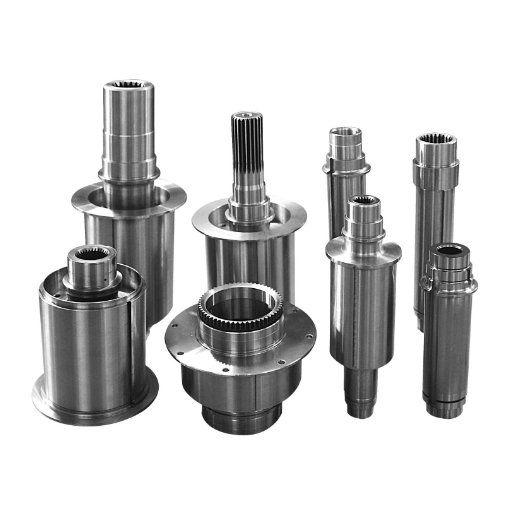
Benefits of Carbon Steel in Shaft Design
According to its mechanical properties, carbon steel is preferred for electric motor shafting. So, below are five major benefits of carbon steel with explanations and data in support of each benefit:
- Tensile Strength: Carbon steel has very good tensile strength, which is needed by electric motor shafts to bear huge loads and rotating forces. For example, AISI 1045 carbon steel has a tensile strength of about 570 MPa (Megapascals), which is high enough to resist deformation arising from the applied stress during operation.
- Cost-Effectiveness: When compared to other materials, such as stainless steel or titanium, carbon steel is cheaper but retains adequate strength and durability; therefore, it allows for cheaper mechanized production. Low material costs have contributed significantly to carbon steel being an attractive choice in the commercial and industrial sectors.
- Machinability: Carbon steel grades such as AISI 1215 steel are known for their excellent machinability. This property gives the advantage of processing the steel into complex shapes and sizes timely and cheap. There is also less wear and tear of cutting tools, in turn increasing machining precision. Hence, this property is great for industries that demand large production volumes.
- Wear and Fatigue Resistance: Carbon steel resists wear and repeated loading cycles, so it is meant for applications in rotating parts. Via surface hardening methods such as carbo-nitriding or carburizing, the shaft’s fatigue life can be improved to withstand sustained service conditions.
- Customization Through Alloy Composition: The properties of carbon steel can be altered by varying the carbon content or by introducing alloying elements such as manganese or chromium. For instance, medium-carbon steels (0.3-0.6% carbon content) provide a compromise between strength and ductility, while higher-carbon steels provide superior hardness. These customizable properties make carbon steel highly suitable for diverse performance requirements.
Thus, due to its combination of mechanical strength, economic viability, and versatility, carbon steel has forever remained a preferred material for designing electric motor shafts in various engineering practices.
Comparing Shaft Materials: Aluminum vs. Steel
Aluminum shafts are barely so light, due to their almost corrosion-free nature, and somewhat more cost-effective than steel shafts, which tend to be much stronger, more durable, and more bearing-capable.
|
Aspect |
Aluminum |
Steel |
|---|---|---|
|
Mass |
Lightweight |
Heavy |
|
Robustness |
Moderate |
High |
|
Longevity |
Moderate |
Excellent |
|
Rust Resistance |
Resistant |
Needs Coating |
|
Expense |
Low |
Moderate |
|
Workability |
Easy |
Moderate |
|
Uses |
EVs, Aerospace |
Industrial, Heavy |
|
Load Strength |
Low |
High |
|
Elasticity |
High |
Low |
|
Thermal Endurance |
Moderate |
High |
Emerging Materials for Motor Shafts
Advancements in material science have introduced a range of innovative materials for manufacturing motor shafts, offering improved performance, sustainability, and efficiency. Among these, composite materials, such as carbon fiber reinforced polymer (CFRP), have become prominent due to their exceptional strength-to-weight ratio and corrosion resistance. CFRP shafts display high stiffness and reduced rotational inertia, making them ideal for high-speed applications, particularly in industries like automotive and aerospace.
Another notable development is the increasing use of advanced titanium alloys. Titanium alloys combine excellent mechanical properties, including high strength and superior corrosion resistance, with relatively low density, which enhances durability while reducing the overall mass. These alloys are particularly useful in demanding environments where weight savings and resilience are critical.
Metal matrix composites (MMCs) are also gaining traction, offering unique properties by combining metals like aluminum or magnesium with reinforcing materials such as silicon carbide or ceramic fibers. MMCs excel in extreme temperature conditions, providing excellent thermal stability, wear resistance, and load-bearing capabilities.
Nanostructured materials, including alloys with engineered nanoscale grain structures, are further pushing the boundaries of motor shaft technology. By minimizing grain size, these engineered materials can achieve higher tensile strength and enhanced fatigue resistance, enabling longer operational lifespans.
These emerging materials represent cutting-edge solutions, addressing limitations of traditional options while opening new possibilities for motor shaft design and performance optimization. Their adoption is expected to grow as production techniques become more cost-effective and as demands for precision, efficiency, and sustainability in engineering applications continue to rise.
Performance Considerations in Motor Selection
Factors Influencing Shaft Performance
The serviceability and reliability of motor shafts depend upon many critical factors, which have to be taken into consideration during the design and selection to ensure better functions of an engineering system. These are:
- Material Composition: Strength, capability to withstand wear, and good durability of a shaft are directly governed by the materials from which they are made. The use of high-strength alloys, composites, or advanced materials such as titanium and carbon fiber can greatly improve the load-bearing ability and the resistance to fatigue or corrosion.
- Load and Torque Requirements: The loading and torque to be interfaced with the shaft under working conditions have to be specific to the design so that all other considerations are secondary. A shaft loaded beyond its operating limits will fail prematurely in bending, twisting, shearing, and so forth; hence, detailed calculations and simulations are very important for a design.
- Dynamic Balancing: Proper balance minimizes vibrations and the concentration of stresses throughout the shaft, resulting in improved performance and longer operational life. Attention to tolerances and symmetrical design will eliminate any imbalances that could hinder efficient operation.
- Surface Treatments and Coatings: Surface hardening, nitriding, or applying wear-resistant coatings could enhance resistance to wear, friction, and environmental degradation by moisture or chemicals.
- Environmental Conditions: For example, temperature changes, corrosive agents, and the entrainment of particulate matter hamper smooth shaft operation. Selecting appropriate materials and design to counter the retaliatory effect of these conditions leads to assured reliability.
- Geometry and Dimensional Accuracy: After carefully working out the design requirements, shaft dimensions such as length, diameter, and concentricity should be selected in the design itself. Even small geometric deviations can induce stresses, lead to misalignments, and cause early-stage failure.
- Bearing and Coupling Interfaces: When bearings and couplings are effectively interfaced, this, along with the smooth rotational motion of the shaft, allows for the correct transfer of loads. Misalignment or incompatible interfaces will subject the shaft to stresses that will impair its performance.
If careful consideration is given to these factors, integrating the most recent advances in materials and design technologies, engineers can maximize the functioning of the shaft while minimizing it breaking down in very demanding applications. Regular maintenance and condition monitoring will also prove beneficial in adding value to the machine’s operational life and serviceability.
Choosing the Right Shaft for DC Motors
Choosing an appropriate shaft for a DC motor is one of the critical decisions that can strongly affect system reliability, efficiency, and optimum performance. Several objectives have to be considered from the standpoint of shaft design-customarily materials, type of loads, service conditions, and compatibility with motor design specifications. Dynamic forces also act on DC motor shafts-torsional stresses and bending loads-being materials probably the most important. High-strength materials such as stainless steel or alloy steel are commonly used, which have excellent fatigue resistance properties and good durability.
Second, the shaft diameter must correspond to the torque output from the motor and coupling so that no misalignment or excessive stress is generated. Depending on application precision, rotational speed, and reduction in wear, among others, hardened shafts or coated shafts may be prescribed. Other aspects, like motor speed, thermal expansion, and vibration characteristics, all must be reviewed to optimally suit one another.
In the recent past, computer-assisted designs have integrated advanced methods such as finite element analysis to simulate stress distribution and predict probable failure points under different loads. With prediction techniques coupled with solid testing, designers can also ascertain that the selected shaft can meet demands in operation and require the least time in maintenance. Proper shaft selection will also improve the entire motor system, in essence, by efficiency and longevity.
Choosing the Right Shaft for AC Motors
Material selection is a highly critical variable in the design of functional shafts for AC motors. Materials chosen are carbon steel, alloy steel, and stainless steel that vary according to the application or operating environment. Carbon steel is greatly used for its high strength-to-weight ratio and low cost consideration, but in cases where corrosion or a high-temperature environment exists, stainless steel is generally opted for because of its corrosion resistance and stability at high temperatures.
Tensile strength, hardness, machinability, etc., are the important considerations in its selection. Alloy steels of a very high tensile strength would be typically selected where heavy loading and wear demand durability. The other consideration affecting the life of the motor is the surface finish of the shaft, relating to how well it will withstand its wear or resistance to stress concentration.
Making the most of manufacturing techniques before heat treating and operating the shaft improvement into mechanical functional properties best; likewise, for example, quenching and tempering can be a better treatment to make the shaft hard and withstand fatigue under dynamic loads.
Material specifications, generally given in the form of AISI or ASTM standards, should be appropriately treated for the actual application so that one can be sure of their reliability. The materials selected can be looked at in terms of performance under load by use of simulation tools during the design stage, thereby confirming their compatibility with the intended motor application. This will lessen much of the trial and error, making the design more efficient.
Advantages and Disadvantages of Different Shaft Types
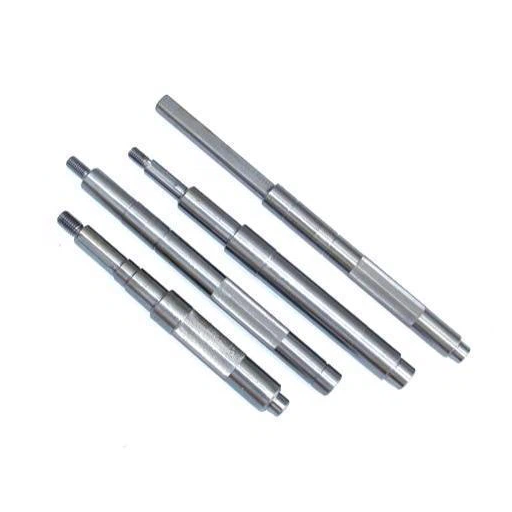
Pros and Cons of Common Shaft Types
1. Solid Shafts
Advantages
- Strength and Durability: Solid shafts are known for their ability to bear heavy loads and torque without bending, thereby being used in high-strength applications.
- Simple Manufacturing: These shafts are simple to manufacture, which makes them cheaper to produce for standard designs.
- Low Vibration: The stiffness of solid shafts produces very little vibration, which keeps mechanical systems operating smoothly.
Disadvantages
- Weight: The solid nature of these shafts makes them heavy, which is undesirable in aerospace applications and high-speed machinery that seeks to reduce weights.
- Material Usage: Solid shafts use higher material quantities, increasing upfront material costs and contributing to sustainability issues.
- Limited Flexibility: Absence of compliance results in problems in systems requiring bending or torsional compliance.
- Hollow Shafts
Advantages
- Light Weight: Hollow shafts are far lighter than solid shafts of the same diameter, thus an advantage in applications where weight reduction is desired.
- Better Torsional Attributes: Hollow shafts have a better strength-to-weight ratio under torsion, hence good in dynamic applications.
- Efficiency in Using Material: Less raw material is consumed while making hollow shafts; this might be good for saving costs as well as the environment.
Disadvantages
- Manufacturing Difficulties: Hollow shafts are harder to make due to difficulties in ensuring uniformity of the material and adequate structural integrity.
- Decreased Load Capacity: They have, comparatively, less capability in handling very high axial or compressive loads.
- Repair and Inspection: Detection and repair of damages to hollow shafts are complex, often needing an elaborate inspection regime like ultrasonic testing.
- Splined Shafts
Advantages
- Accurate Torque Transmission: Splines are designed to transmit rotational motion accurately without slip or relative movement, under power.
- Easy Assembly: The engagement allows for easy assembly and disassembly, especially for machines requiring frequent maintenance or adjustments.
- Adaptability: Splined shafts may link different coupling configurations, making them adaptable for diverse industrial purposes.
Disadvantages
- Stress Concentration: The existence of splines causes stress concentration points that may lower a shaft’s general strength and durability.
- Increased Cost of Production: The need for precision in machining splines causes an increase in production costs over those of simpler shafts.
- Wear: Intermittent high torsional loadings can wear the splines more rapidly, requiring them to be replaced more frequently.
- Flexible Shafts
Advantages
- Very Flexible: A flexible shaft can bend and flex through curved routes and is, therefore, suited for applications involving the transmission of non-linear forces.
- Vibration Dampening: Their flexibility makes them good for vibration absorption, resulting in a smooth operation and lessening the fatigue of the connected components.
- Easy to Install: In some cases, the installation of flexible shafts may be done without the precise alignment of components.
Disadvantages
- Load Restrictions: Flexible shafts cannot handle heavy or high-torque loads and will deform and fail under too much stress.
- Complex Failure Modes: The dynamic behavior of a flexible shaft makes it more difficult to analyze failure and maintenance.
- Considerations for Durability: Continuous bending and movement will eventually cause wear and shorten the life span as compared with more rigid shaft designs.
A detailed evaluation can be used as a guideline for selecting the appropriate type of shaft based on specific applications, which considers factors like performance, manufacturing feasibility, and long-term maintainability.
Cost Analysis of Various Motor Shaft Options
Cost estimation plays a vital role in assessing other options for motor shafts, given that it also depends on the manufacturing processes, material selection, and how the components will be operated. Here’s a breakdown of various cost considerations that arise with usual motor shaft materials:
- Steel Shafts: Due to some specific properties of abundant raw material in nature and machinability, steel, especially carbon and alloy steels, tends to be cheaper. The raw material cost would be fairly reasonable; however, if one wants to have it treated for heat-hardening or coated for anti-corrosion for longevity, then it adds further price to the formation.
- Stainless Steel Shafts: Stainless steel finds its use where corrosion resistance is demanded. Stainless steel, from the standpoint of material costs, rates higher than its ordinary fellow steels, but it would surely reduce the maintenance and replacement costs in a harsh environment, such as from marine or chemical exposure.
- Aluminum Shafts: Aluminum shafts are lightweight and superbly machinable. Aluminum material is cheaper than stainless steel; however, some other costs may arise while strengthening is needed by processes like anodizing. Aluminum favors applications where weight reduction wins over cost.
- Composite Shafts: Advanced composite materials, like carbon fiber-reinforced polymers, provide excellent strength-to-weight ratios. Yet, the manufacturing process is complex, and the high material costs restrict their usage to select, high-performance applications.
- Titanium Shafts: Though the titanium ranks usefully high for strength and corrosion resistance, it is greatly priced because of the expensive extraction and processing methods of the material. These are found ideally in the aerospace and medical equipment sectors.
- Flexible Shafts: A flexible shaft consists of a layered arrangement of wire bundles and is costly owing to the complex manufacturing process as compared to its rigid counterparts. However, they are the target mechanism for applications requiring exact and dynamic motion.
A trade-off between actual cost against supposed life span, performance efficiency, and application-specific needs would go a long way in effectively aiding the stakeholders to choose something that suits their functions and budget constraints.
Operational Needs and Their Impact on Shaft Choice
Selecting an appropriate shaft design mainly depends on peculiar operational requirements such as load conditions, actual rotational speed tolerances, and the environment. For example, high vibration or temperature-fluctuating environments would require very thermally and mechanically stable materials. On the other hand, with increasing rotational speed, one has to take great care of centrifugal forces or dynamic imbalances, which over time may induce a certain level of fatigue in the materials or may operate inefficiently with regard to some other parameters.
Flexible shafts can ease motion transfer in complicated modes where angular misalignment or multi-dimensional movement is unavoidable; these cannot be tolerated under a rigid shaft system. On the other hand, rigid shafts are suitable for linear motion in which the simplest design minimizes the complexity involved in their manufacture, and hence, their costs of any kind.
With present-day innovations in material science and engineering and applications of advanced high-performance alloys or carbon composites, both flexible and rigid shafts can now be made to operate under much more difficult conditions. They impart longer life while allowing higher loads and speed, which means fewer maintenance intervals and hence reduced overall cost.
Trends in Electric Motor Shaft Manufacturing
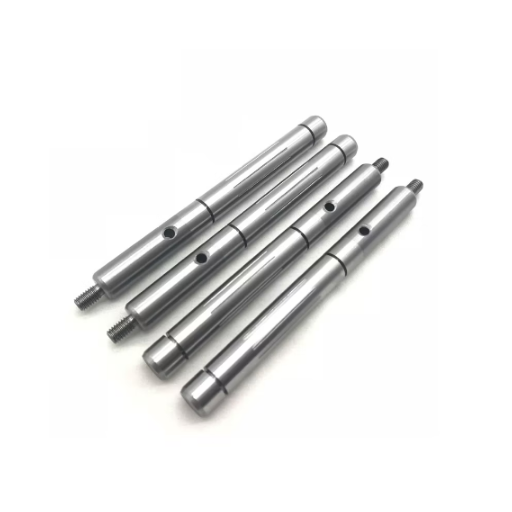
Innovations in Shaft Manufacturing Techniques
In recent times, shaft manufacturing improvements have helped in amplifying the operational safety and durability of a motor shaft. A key development in current-day shaft technology has been considered to be the application of advanced metallurgical techniques. As with heat treatments and surface-hardening treatment processes, where the surface hardness or surface wear properties of the shaft are enhanced, these processes improve the wear resistance and toughness of a given material. So the shafts could bear higher stresses and withstand longer operational life cycles. More recently, the use of composite materials has been gaining momentum, offering the right combination of strength and lightweight.
Then, further improvements came in manufacturing, thanks to modern precision machining technologies, including CNC machinery. Such systems manage machining operations with tight tolerances and retain very high dimensional accuracy, hence reducing the possibility of defects from shaft misalignment during normal operation. In addition, advances in additive manufacturing (3-D printing) have unveiled opportunities for rapid prototyping of complex shaft geometries, compressing the time to market and allowing economic testing methods before full-scale production.
From a newer sustainability approach, green manufacturing methods emerge. Examples include using recyclable materials and embracing energy-efficient production systems. Integrating these modern practices further optimizes the turbine shaft’s performance, sustainability, and operational efficiency. All these innovations make the shafts of electric motors competent to fit in with the demanding needs of applications of the present times in a cost-effective manner.
Future Trends in Electric Motor Shaft Materials
The advancement of electric motor shaft materials, dependent on developments in material sciences, will continue to be pushed by demand for lighter, yet durable components. One primary trend is the employment of advanced composites, e.g., carbon fiber-reinforced polymers (CFRPs). These materials result in better strength-to-weight ratios compared to traditional metallic materials. With the need to reduce energy losses attributed to rotational inertia for enhanced overall system efficiency, which is important in electric vehicles (EVs) and precision robotics, the focus has gradually shifted to this area.
In metallurgy, simultaneous developments in innovations are occurring. High-performance alloys having nano-structured grains or involving phase transformations are developed to enhance hardness, wear resistance, and fatigue life. These materials, probably put under severe mechanical stresses and thermal expansion, are suited to high-speed operation where normal designs may not perform.
An emerging trend sees sustainability as a key criterion concerning material choice. Producers are seeking to produce shafts from recycled and bio-based materials while still maintaining the performance standard. Decisions concerning material source are based on life cycle assessment tools and the principles of a circular economy so that such components meet very strict environmental regulations.
Surface treatments and coatings such as plasma nitriding and diamond-like carbon (DLC) films, meanwhile, are gaining traction. Such treatments, when applied to components, would reduce surface wear and corrosion and thereby extend the operating life under harsh working conditions. All this, in conjunction with precision manufacturing, e.g., additive manufacturing, sets the benchmark for materials of the next-generation electric motor shaft.
The confluence of all these trends is set to be the new standard, thereby pushing the frontier further in terms of performance, reliability, and sustainability.
Impact of Industry Trends on Shaft Selection
The trends in materials engineering and manufacturing technologies are profoundly influencing the criteria for the selection of shafts for electric motors. Novel materials, such as high-performance composites and novel alloys, offer superior strength-to-weight ratios, corrosion resistance, and thermal stability. Such properties minimize wear and tear and maximize the life cycle of the components in high-demand applications. Additive manufacturing advances in the past decade allow a higher degree of design flexibility, taking shafts from basic round pieces to customized parts made to precise specifications while minimizing production waste.
Also, sustainability issues have changed the priorities to some extent. The environmentally friendly solutions drive the choice of recyclable materials as well as the reduction of processes that consume a lot of energy. The industry data indicate a greater inclination toward lightweight shafts that are durable; hence, these compromise on the weight of the whole system for energy efficiency. Modern simulation software further improves design, allowing engineers to predict the real-world performance, thus reducing the number of physical prototype iterations.
Together, these innovations influence shaft selection criteria, thus requiring that the balance is struck between the performance criteria and environmental and operational considerations. Data-backed methodology ensures that components selected can satisfy present and future benchmarks of the industry from the perspective of functionality and potential sustainability.
Frequently Asked Questions (FAQ)
Q: What are the different types of electric motor shafts?
A: Electric motor shaft types can vary based on the application and design of the motor. Common types include cylindrical shafts, keyed shafts, and shafts with grooves or teeth along their length. These types are designed to accommodate different methods of torque transmission and alignment, ensuring optimal performance in various applications.
Q: How does the shaft design affect the motor’s performance?
A: The design of the motor’s shaft significantly impacts the mechanical performance and efficiency of the motor. For instance, a precisely aligned shaft can reduce excessive vibration, which is critical for maintaining the longevity of the motor. Additionally, the choice of material, such as stainless steel or carbon steel, can also affect the durability and performance of the shaft.
Q: What is the relationship between the rotor and stator in electric motors?
A: The rotor and stator work together to convert electrical energy into mechanical energy. The rotor, which is attached to the motor’s shaft, rotates within the magnetic field generated by the stator. This interaction allows the motor to produce torque at specific RPM levels, essential for applications such as conveyors and other industrial motors.
Q: Can the electric motor shaft types affect the motor’s output torque?
A: Yes, different electric motor shaft types can influence the motor’s output torque. For example, shafts designed with keyways allow for better torque transmission from the rotor to any attached load. This is crucial for motors requiring high starting torque to initiate motion.
Q: What are the common materials used for electric motor shafts?
A: Common materials for electric motor shafts include carbon steel and stainless steel. Carbon steel is often used for its strength and cost-effectiveness, while stainless steel is ideal for applications where corrosion resistance is necessary. The selection of material can directly affect the motor’s durability and mechanical performance.
Q: What type of motors commonly use induction motor shafts?
A: Induction motors, which are widely utilized in various industrial applications, often feature specific types of motor shafts designed to handle high starting torque and continuous operation. The shaft’s design helps in efficiently transmitting the torque generated by the rotor to the connected load.
Q: How does shaft alignment impact an electric motor’s operation?
A: Proper shaft alignment is critical in electric motors to ensure smooth operation and minimize wear. Misalignment can lead to excessive vibration, which not only reduces the motor’s lifespan but can also affect its efficiency and performance. Regular alignment checks are recommended to maintain optimal operation.
Q: What role do stepper motors play in electric motor applications?
A: Stepper motors are a specific type of electric motor that can achieve precise positioning and control. Their shafts are designed to handle incremental movements, making them ideal for applications requiring high precision, such as robotics and CNC machines. The design of the motor’s output shaft is crucial for achieving the desired performance in these applications.
Q: How do frame size and shaft size influence motor selection?
A: The frame size and shaft size of a motor are key factors in the selection and design process. Larger frame sizes typically accommodate higher power outputs and larger shafts, which are essential for transmitting greater torque. Understanding the relationship between frame size and motor shaft types helps ensure that the motor meets the application’s requirements.
UCTH213-40J-300 with Setscrew(inch)
CNSORDERNO: Normal-duty(2)
TOGN: UCTH213-40J-300
SDI: B-R1/8
SD: 2 1/2
UCTH212-39J-300 with Setscrew(inch)
CNSORDERNO: Normal-duty(2)
TOGN: UCTH212-39J-300
SDI: B-R1/8
SD: 2 7/16
UCTH212-38J-300 with Setscrew(inch)
CNSORDERNO: Normal-duty(2)
TOGN: UCTH212-38J-300
SDI: B-R1/8
SD: 2 3/8
UCTH212-36J-300 with Setscrew(inch)
CNSORDERNO: Normal-duty(2)
TOGN: UCTH212-36J-300
SDI: B-R1/8
SD: 2 1/4
UCTH211-35J-300 with Setscrew(inch)
CNSORDERNO: Normal-duty(2)
TOGN: UCTH211-35J-300
SDI: B-R1/8
SD: 2 3/16
UCTH211-34J-300 with Setscrew(inch)
CNSORDERNO: Normal-duty(2)
TOGN: UCTH211-34J-300
SDI: B-R1/8
SD: 2 1/8









